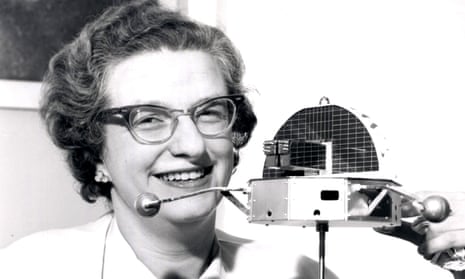Nancy Roman, who has died aged 93, was Nasa’s first chief of astronomy. She was the first woman to hold an executive position at America’s space agency and had direct oversight of the planning and early development of what became the Hubble space telescope. This led Nasa to call her “mother of Hubble”.
Joining Nasa in 1959, just six months after the agency opened, Roman was in charge of developing a programme of astronomy from space. She travelled the US talking to astronomers in their various universities and listening to their ambitions. She also discussed with them the advantages of observing from space, where there was no atmosphere to blur the view and no daytime to halt the observatory’s work for half the day.
In 1960, she brought together around 30 astronomers and Nasa engineers to discuss the idea of a large, general-purpose space telescope. It would cost 20 times the price of the largest ground-based telescope, so Roman wanted them to come up with something that made sense to everyone. The astronomers could say what they wanted to use it for, and the engineers could talk about how to build such an instrument. Because the two groups did not speak the same technical language, Roman acted as interpreter between them.
This laid the foundation, but it took until the 1970s for certain key technologies to be developed. These included the CCD chips that made the first digital cameras possible. Once these were available, Roman set up the programme that built the Hubble space telescope. It was painstaking work, and by the time the telescope was launched in 1990, Roman had been retired from Nasa for 11 years, becoming a consultant and an advocate for women in science.
She was born in Nashville, Tennessee, the only child of Georgia (nee Smith), a former music teacher, and Irwin Roman, a geophysicist. Because of her father’s job, the family lived a peripatetic life, moving to Oklahoma, Texas, New Jersey, Michigan and Nevada. Roman remembered her mother taking her outside as a child in Michigan to look at the natural world. As well as pointing out specific birds, plants and animals, her mother also showed her the constellations and the northern lights. Her father would answer her questions about the natural world in a scientific way. This fuelled her curiosity.
Her interest in astronomy truly began when the family moved to Nevada. They settled on the edge of Reno, well away from the city lights, and Nancy found the stars captivating. At the age of 11, she organised her friends into an astronomy club. They would read together about the constellations, learning about the exotic celestial objects to be found within them. Nancy’s interest took her to the public library where she devoured any book she could find about space, and she determined to become an astronomer. But navigating towards that goal proved unexpectedly difficult. In high school, she asked to take a second year of algebra instead of a fifth year of Latin. Her guidance counsellor retorted: “What lady would take mathematics instead of Latin?”
She continued to encounter the belief that women did not become scientists throughout her schooling. Only in her first year at Swarthmore College, Pennsylvania, did she receive her first begrudging encouragement. While she was working in the lab one day, the head of physics confessed to her that he usually tried to talk women out of going into physics but in Roman’s case he conceded that she “might make it”. She graduated with a degree in astronomy in 1946. Moving to the University of Chicago, she earned a PhD in astronomy three years later and started working at the university’s Yerkes Observatory. Yet, after six years of professional success at Yerkes, her future was not secure.
She was not a permanent staff member and she could see that those positions were overwhelmingly going to men. Her chance came in 1955 when she saw an astronomer was needed for the US government’s Naval Research Laboratory in Washington, DC. She applied for and got the job. Four years later, she was tipped off that the recently formed Nasa was looking for someone to set up its space astronomy programme. She won that position, too, and it was at Nasa that she finally felt men treated her as an equal.
As part of her work that would culminate in the Hubble space telescope, she developed and budgeted numerous smaller space observatories. In particular, the Orbiting Astronomical Observatory programme was a series of four space observatories launched between 1966 and 1972. They provided the first high-quality observations of celestial objects at ultraviolet wavelengths, which is a colour of light largely blocked from reaching the ground by our atmosphere.
But it was Hubble that changed the way we saw the universe, wowing the public with its images and revolutionising every field of astronomy because of Roman’s meeting in 1960 that insisted the telescope should be a general purpose observatory whose only limits would be the imaginations of the astronomers who used it. Originally planned for a 15-year lifespan, the telescope is now in its 28th year of operation.

Comments (…)
Sign in or create your Guardian account to join the discussion